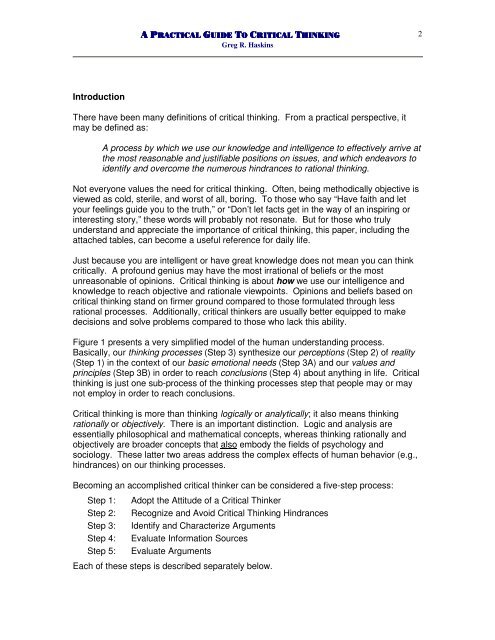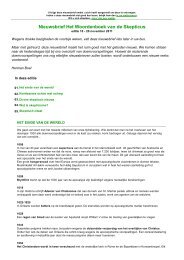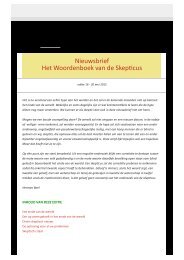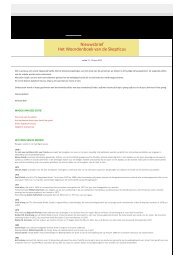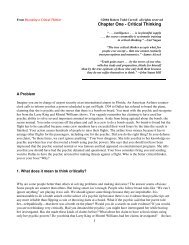A Practical Guide to Critical Thinking - The Skeptic's Dictionary
A Practical Guide to Critical Thinking - The Skeptic's Dictionary
A Practical Guide to Critical Thinking - The Skeptic's Dictionary
You also want an ePaper? Increase the reach of your titles
YUMPU automatically turns print PDFs into web optimized ePapers that Google loves.
Greg R. Haskins<br />
2<br />
Introduction<br />
<strong>The</strong>re have been many definitions of critical thinking. From a practical perspective, it<br />
may be defined as:<br />
A process by which we use our knowledge and intelligence <strong>to</strong> effectively arrive at<br />
the most reasonable and justifiable positions on issues, and which endeavors <strong>to</strong><br />
identify and overcome the numerous hindrances <strong>to</strong> rational thinking.<br />
Not everyone values the need for critical thinking. Often, being methodically objective is<br />
viewed as cold, sterile, and worst of all, boring. To those who say “Have faith and let<br />
your feelings guide you <strong>to</strong> the truth,” or “Don’t let facts get in the way of an inspiring or<br />
interesting s<strong>to</strong>ry,” these words will probably not resonate. But for those who truly<br />
understand and appreciate the importance of critical thinking, this paper, including the<br />
attached tables, can become a useful reference for daily life.<br />
Just because you are intelligent or have great knowledge does not mean you can think<br />
critically. A profound genius may have the most irrational of beliefs or the most<br />
unreasonable of opinions. <strong>Critical</strong> thinking is about how we use our intelligence and<br />
knowledge <strong>to</strong> reach objective and rationale viewpoints. Opinions and beliefs based on<br />
critical thinking stand on firmer ground compared <strong>to</strong> those formulated through less<br />
rational processes. Additionally, critical thinkers are usually better equipped <strong>to</strong> make<br />
decisions and solve problems compared <strong>to</strong> those who lack this ability.<br />
Figure 1 presents a very simplified model of the human understanding process.<br />
Basically, our thinking processes (Step 3) synthesize our perceptions (Step 2) of reality<br />
(Step 1) in the context of our basic emotional needs (Step 3A) and our values and<br />
principles (Step 3B) in order <strong>to</strong> reach conclusions (Step 4) about anything in life. <strong>Critical</strong><br />
thinking is just one sub-process of the thinking processes step that people may or may<br />
not employ in order <strong>to</strong> reach conclusions.<br />
<strong>Critical</strong> thinking is more than thinking logically or analytically; it also means thinking<br />
rationally or objectively. <strong>The</strong>re is an important distinction. Logic and analysis are<br />
essentially philosophical and mathematical concepts, whereas thinking rationally and<br />
objectively are broader concepts that also embody the fields of psychology and<br />
sociology. <strong>The</strong>se latter two areas address the complex effects of human behavior (e.g.,<br />
hindrances) on our thinking processes.<br />
Becoming an accomplished critical thinker can be considered a five-step process:<br />
Step 1:<br />
Step 2:<br />
Step 3:<br />
Step 4:<br />
Step 5:<br />
Adopt the Attitude of a <strong>Critical</strong> Thinker<br />
Recognize and Avoid <strong>Critical</strong> <strong>Thinking</strong> Hindrances<br />
Identify and Characterize Arguments<br />
Evaluate Information Sources<br />
Evaluate Arguments<br />
Each of these steps is described separately below.


